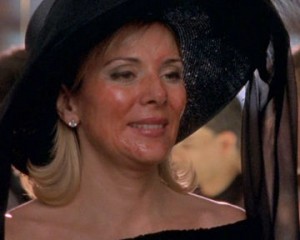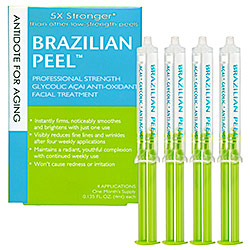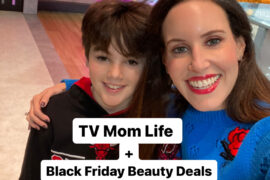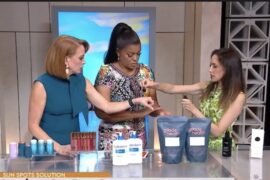 Chemical peels get a bad rap. Blame Samantha Jones. Sometimes in our obsessive efforts to have the skin of a, well, pre-pubescent girl, we get sucked in to impulse treatments and procedures without proper research. Peels can reveal a hidden glow when done by an experienced doctor or professional. Samantha’s was a scabby disaster — a far cry from her typical post-orgasm radiance.
Chemical peels get a bad rap. Blame Samantha Jones. Sometimes in our obsessive efforts to have the skin of a, well, pre-pubescent girl, we get sucked in to impulse treatments and procedures without proper research. Peels can reveal a hidden glow when done by an experienced doctor or professional. Samantha’s was a scabby disaster — a far cry from her typical post-orgasm radiance.
 It’s totally understandable (and good) to be cautious with peels. Rather than diving in head first, we gave an at-home peel a try to get a taste of the procedure without risk of frying our skin. The Brazilian Peel, which has no relation to the Brazilian hair treatment by the way, is a four-week regimen. The active ingredients are 30% glycolic acid combined with antioxidants and vitamins to counterbalance any irritation that could occur.
It’s totally understandable (and good) to be cautious with peels. Rather than diving in head first, we gave an at-home peel a try to get a taste of the procedure without risk of frying our skin. The Brazilian Peel, which has no relation to the Brazilian hair treatment by the way, is a four-week regimen. The active ingredients are 30% glycolic acid combined with antioxidants and vitamins to counterbalance any irritation that could occur.
After the first application, skin was a little softer but there wasn’t any dramatic ‘OMG I’m glowing!’ moment. It takes about two to four weeks for skin to start showing improvement, like many other anti-aging regimens. The nice thing with this peel is that it contains a considerably higher concentration of glycolic acid than other products on the market, yet it didn’t make our sensitive skin look like we just finished a marathon session on the treadmill. No wonder it’s a best seller at Sephora.
Summer is approaching so one huge note of caution: If you do a peel, sunscreen is not negotiable. Chemical peels deeply exfoliate and slough off some of the protective layers of skin. The new, virgin skin underneath is sensitive and does not combat the sun’s rays the way older skin does. In fact, if you don’t use SPF after a chemical peel, you’re basically inviting the sun to come in, torch your skin and leave you with more wrinkles and brown spots than you started with.




Comments are closed.